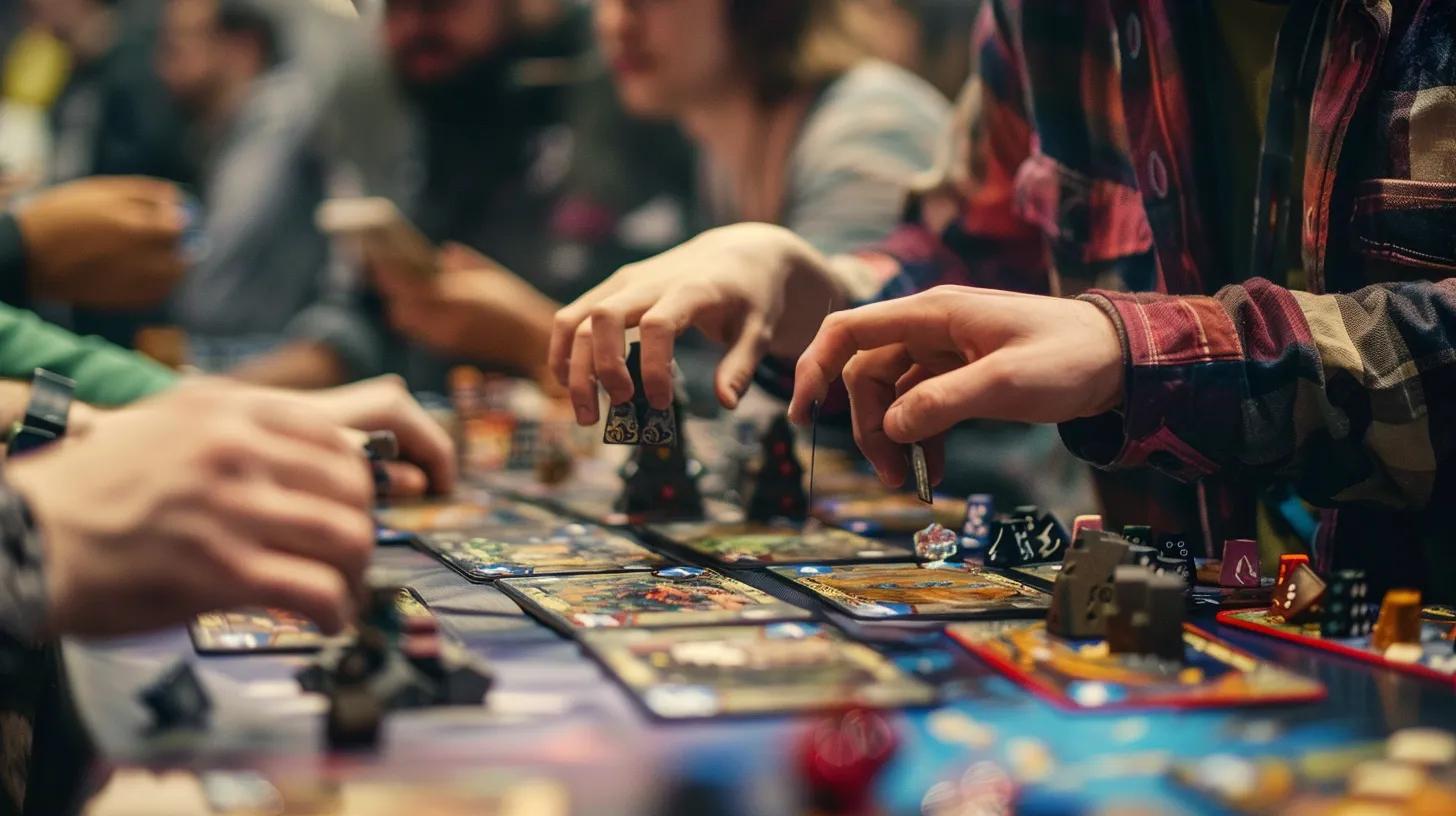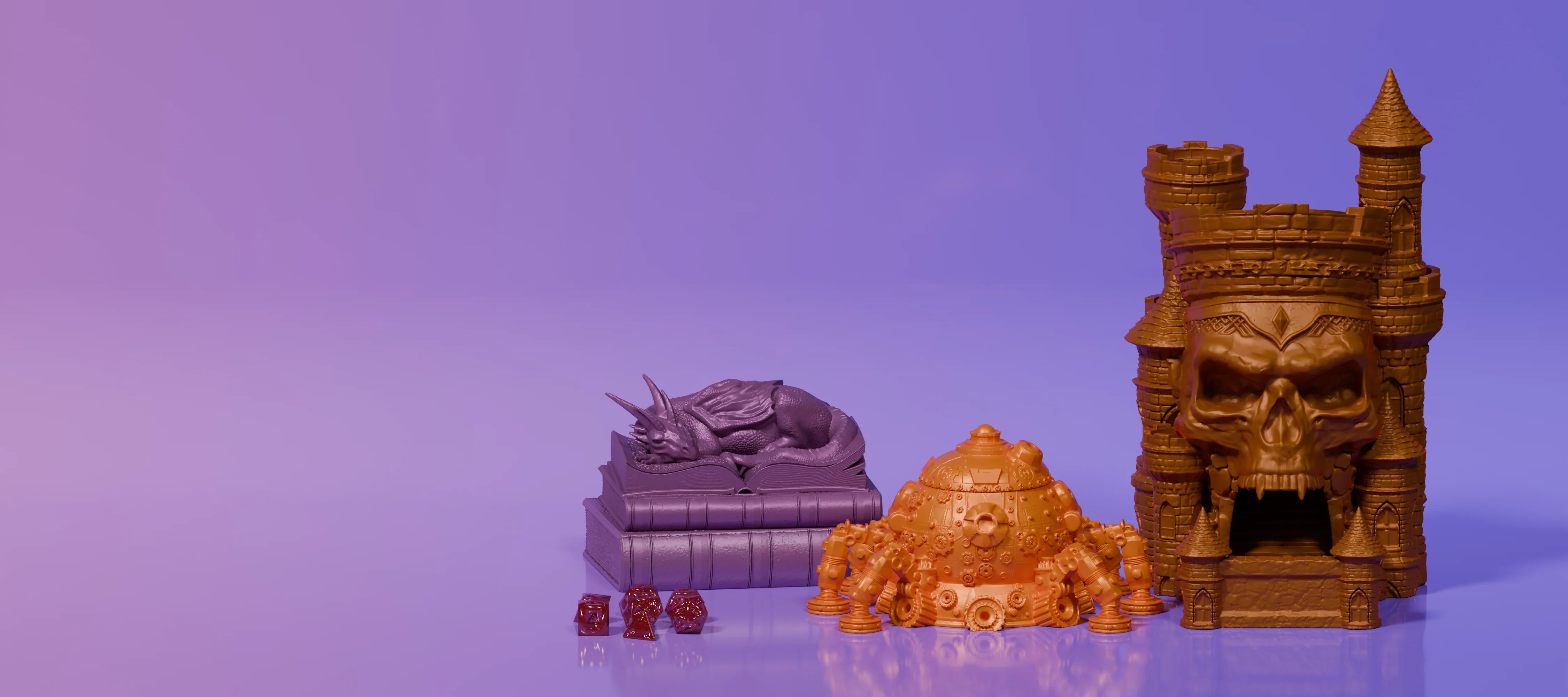
Key Features of a Board Game: What Makes It Great
Board games have evolved from simple family pastimes into immersive worlds filled with strategy, storytelling, and tactile craftsmanship. Whether you’re a game designer, a Dungeon Master, or just someone who loves a good roll of the dice, understanding the core features that make a game great helps you appreciate, and even improve, the experience at your table.
At Fabletop, we live and breathe for tabletop immersion. From our Dice Towers to our dice sets, we know that the joy of play is as much about what’s on the table as it is about who’s sitting around it.
Let’s break down what makes a board game truly great, the balance of design, storytelling, and craftsmanship that keeps players coming back for “just one more round.”

Every great board game balances mechanics, story, and player experience.
TL;DR: The Key Features of a Great Board Game
A great board game combines strategy, balance, story, and craftsmanship. Here’s the quick version before we dive deeper:
- Core Gameplay Mechanics: Every great game starts with meaningful decisions and a clear objective.
- Balance & Fairness: Players should always feel like they have a fighting chance, luck meets skill.
- Theme & Immersion: Strong storytelling and consistent art make the game world come alive.
- Quality Components: Durable, well-designed pieces enhance immersion and replayability.
- Clear Rules & Player Aids: A clean rulebook and reference sheets make learning and teaching easy.
- Player Interaction: Social energy, trading, bluffing, cooperation, turns a good game into a memorable one.
- Elegance & Usability: Simple to learn, hard to master, the golden rule of timeless design.
In short: Great board games don’t just play well, they feel good to play.
Core Gameplay Foundation
At the heart of every board game lies the gameplay loop; the decisions, actions, and reactions that create tension, excitement, and satisfaction.
Mechanics & Decision Space
Game mechanics are the engine that drives the experience. A great mechanic creates a web of interesting choices, where every move feels meaningful, and no two sessions play out the same way.
Common mechanical frameworks include:
- Worker placement (strategic optimization - Agricola)
- Deck building (growth over time - Dominion)
- Area control (tension and territory - Risk, Scythe)
Goals & Victory Conditions
Players need a clear objective. Whether it’s gathering treasure, completing quests, or outmaneuvering rivals, the goal gives direction and motivation.
Tension & Risk
Games thrive on stakes. The thrill of a risky move or the anxiety of a close roll keeps players emotionally engaged. A perfectly tuned board game makes every decision feel both dangerous and rewarding.
Replayability
Replayability is where true longevity lives. Random setups, dynamic player interaction, and modular expansions ensure your game never feels stale.
Balance & Fairness

A board game’s success hinges on balance, the invisible math that keeps every player on equal footing while allowing multiple paths to victory.
Balanced design prevents “runaway leaders,” ensures no single strategy dominates, and keeps both newcomers and veterans invested.
Table: Elements of Good Game Balance
| Aspect | What It Means | Example / Fix |
|---|---|---|
| Starting fairness | Everyone begins equally | Symmetrical setup, equal resources |
| Strategy viability | No single “best” route | Multiple win conditions |
| Luck moderation | Randomness adds fun, not frustration | Dice modified by skill, reroll mechanics |
| Scaling | Works at 2, 4, or 6 players | Adjust rules for player count |
Pro Tip: The perfect balance often comes from imperfect predictability. When dice, strategy, and story mix, every roll tells a tale.
Great games, and great worlds thrive on balance. Keep your campaign notes, NPCs, and plot twists perfectly aligned with a journal built for Dungeon Masters and dreamers alike. Explore the Fantasy Journal Collection
Theme, Immersion & Coherence
Theme is where the magic happens. It transforms cardboard and tokens into a living world. A great board game doesn’t just use theme, it embodies it.
Mechanics Fit the Story
A game about pirates should feel swashbuckling; one about ancient empires should feel strategic and grand. Mechanics and story should reinforce one another, not fight for attention.
Aesthetic Consistency
Color palettes, fonts, and artwork should transport players to the intended world. Consistency builds immersion, disjointed design breaks it.
Narrative Flow
Great games have arcs: beginnings, conflicts, climaxes, and resolutions. Whether it’s Gloomhaven’s campaign system or the shared chaos of Codenames, the best games feel like stories told in turns.
Components & Physical Design

In the tactile world of board games, components matter. Every token, mee tower, and tome adds to the overall experience.
Quality & Durability
Pieces that feel good to hold create satisfaction before the first move. Sturdy materials (like PLA accessories) elevate your game from a hobby to an heirloom.
Ergonomics & Accessibility
Good design is inclusive design. Use color-blind-friendly components, clear icons, and intuitive layouts so everyone can join in seamlessly.
Organization & Storage
Nothing kills immersion like messy setup. Great games include thoughtful inserts, trays, or vaults for fast deployment and teardown.
Common component types that define the experience:
- Boards (central or modular)
- Dice (randomization engine)
- Cards (information or resource system)
- Tokens & miniatures (representation & immersion)
- Rulebook & reference guides
Keep your components organized and stylish with our dice storage. Perfect for storing dice, minis, and game accessories, no shelf dust guaranteed.
Rulebook, Teachability & Player Aids
A game’s rulebook is its storyteller and referee. Clear, structured rules make the difference between a smooth experience and a confused table.
Structure That Teaches
- Start simple: Overview → setup → gameplay → scoring
- Include visual aids: Examples, diagrams, turn summaries
- Index everything: Let players find rulings quickly mid-game
Player Aids
A good player aid (or quick reference) eliminates downtime and supports learning. Every player should have one within reach, no need to pass around the rulebook.
Pro Tip: Streamline your play sessions by keeping aids within arm’s reach. It keeps the table flowing and the story alive.
Equip your table with an elegant DM Screen , organize notes, hide rolls, and keep the adventure running smoothly.
Social Dynamics & Player Interaction
Games aren’t just systems, they’re social experiences. The best board games encourage conversation, negotiation, laughter, and tension.
Cooperative vs. Competitive
Some thrive on teamwork (Pandemic), others on rivalry (Catan). The best games clearly signal what type of engagement they reward.
Meaningful Interaction
Interaction shouldn’t just be chaos; it should matter. Whether it’s trading, bluffing, or direct conflict, the players themselves become part of the narrative engine.
Table Energy
Keep downtime minimal and turns snappy. The “table energy,” that shared anticipation, is what people remember long after the last die is cast.
Elegance & Usability
A good board game is like a good story, easy to learn, hard to master.
Simplicity vs Depth
Great games hide complexity behind intuitive rules. Think of Ticket to Ride, easy enough for beginners, deep enough for veterans.
Rule Bloat
If your game needs a 20-page FAQ, it might need a redesign. Elegant games keep exceptions minimal.
Setup & Teardown Time
Shorter setup equals faster immersion. Modern gamers value experiences that get them playing quickly.
Speed up your setup by storing your gaming gear in our leather rpg bags
Conclusion
From elegant mechanics to balanced design and immersive components, the best board games combine brain and heart; strategy, story, and style.
At Fabletop, we believe that the tools of play should enhance the magic of the moment. Whether it’s the satisfying clatter of dice in a handcrafted tower or the immersive detail of a themed tome, your accessories deserve to be as legendary as your adventures.
So next time you gather your party, take a moment to appreciate what’s on your table, and make sure it’s built for more than shelf dust.
Frequently Asked Questions
What are some popular board game genres?
Board games come in various genres, each offering unique gameplay experiences. Popular genres include strategy games, where players make tactical decisions (e.g., Chess), cooperative games that require teamwork to achieve a common goal (e.g., Pandemic), and party games designed for social interaction and fun (e.g., Codenames). Other genres include deck-building games, area control games, and role-playing games, each catering to different player preferences and group dynamics.
How can I improve my board game design skills?
Improving your board game design skills involves a mix of study, practice, and feedback. Start by analyzing existing games to understand their mechanics and themes. Playtest your designs frequently, gathering feedback from players to refine your ideas. Joining board game design communities, attending workshops, and reading books on game design can also provide valuable insights. Remember, iteration is key; don’t hesitate to revise your game based on player experiences.
What role does player interaction play in board games?
Player interaction is crucial in board games as it enhances the social experience and adds depth to gameplay. Interaction can take many forms, such as negotiation, trading, or direct competition. Games that encourage meaningful interaction often create memorable moments and foster camaraderie among players. The level of interaction can vary, with some games focusing on cooperation while others emphasize rivalry, shaping the overall dynamics and enjoyment of the game.
How do I choose the right board game for my group?
Choosing the right board game for your group involves considering several factors, including the players' experience levels, preferences, and the desired game length. Assess whether your group enjoys competitive or cooperative gameplay, and whether they prefer strategy-heavy games or lighter, more casual options. Additionally, consider the number of players and the complexity of the rules. Reading reviews and watching gameplay videos can also help you make an informed decision.
What are some tips for teaching a new board game?
When teaching a new board game, clarity and engagement are key. Start with a brief overview of the game’s theme and objectives to set the context. Break down the rules into manageable sections, focusing on the setup, gameplay, and scoring. Use visual aids, such as diagrams or examples, to illustrate complex concepts. Encourage questions and be patient, allowing players to grasp the mechanics before diving into the game. A smooth introduction can enhance the overall experience.
How can I enhance the thematic experience of a board game?
Enhancing the thematic experience of a board game involves creating an immersive environment that aligns with the game’s narrative. Use thematic components, such as custom artwork, soundtracks, or props, to deepen the experience. Encourage players to engage with the story by adopting character roles or using thematic language during gameplay. Additionally, ensure that the mechanics reinforce the theme, making every action feel relevant to the narrative. This cohesion can significantly elevate the enjoyment of the game.




